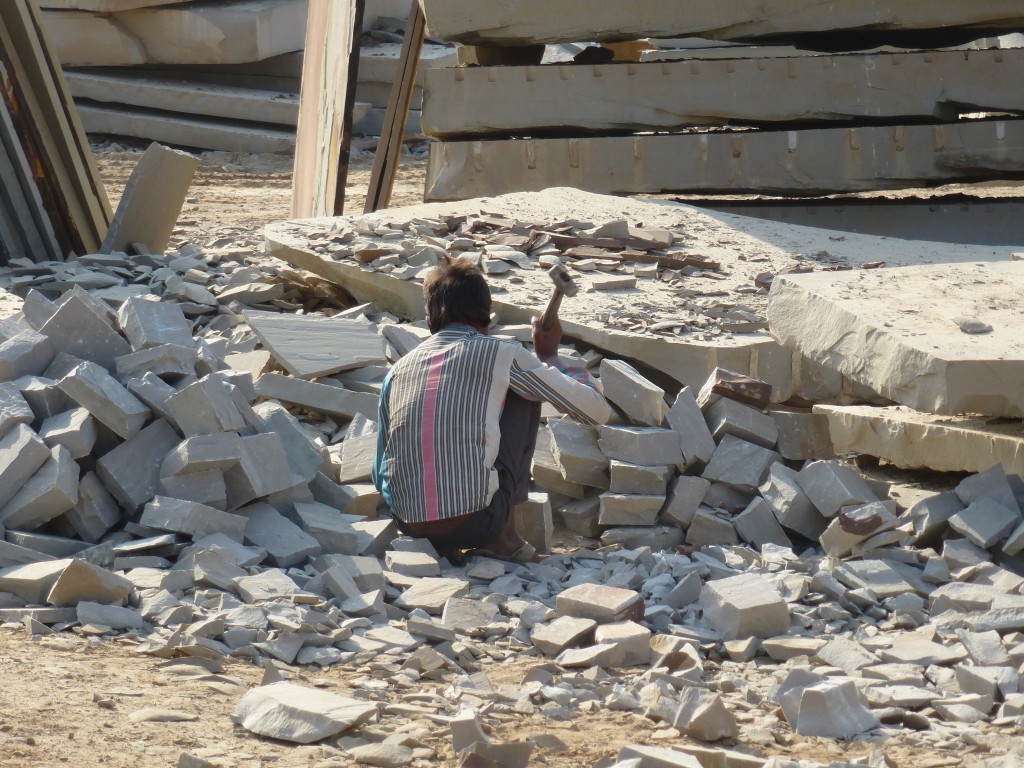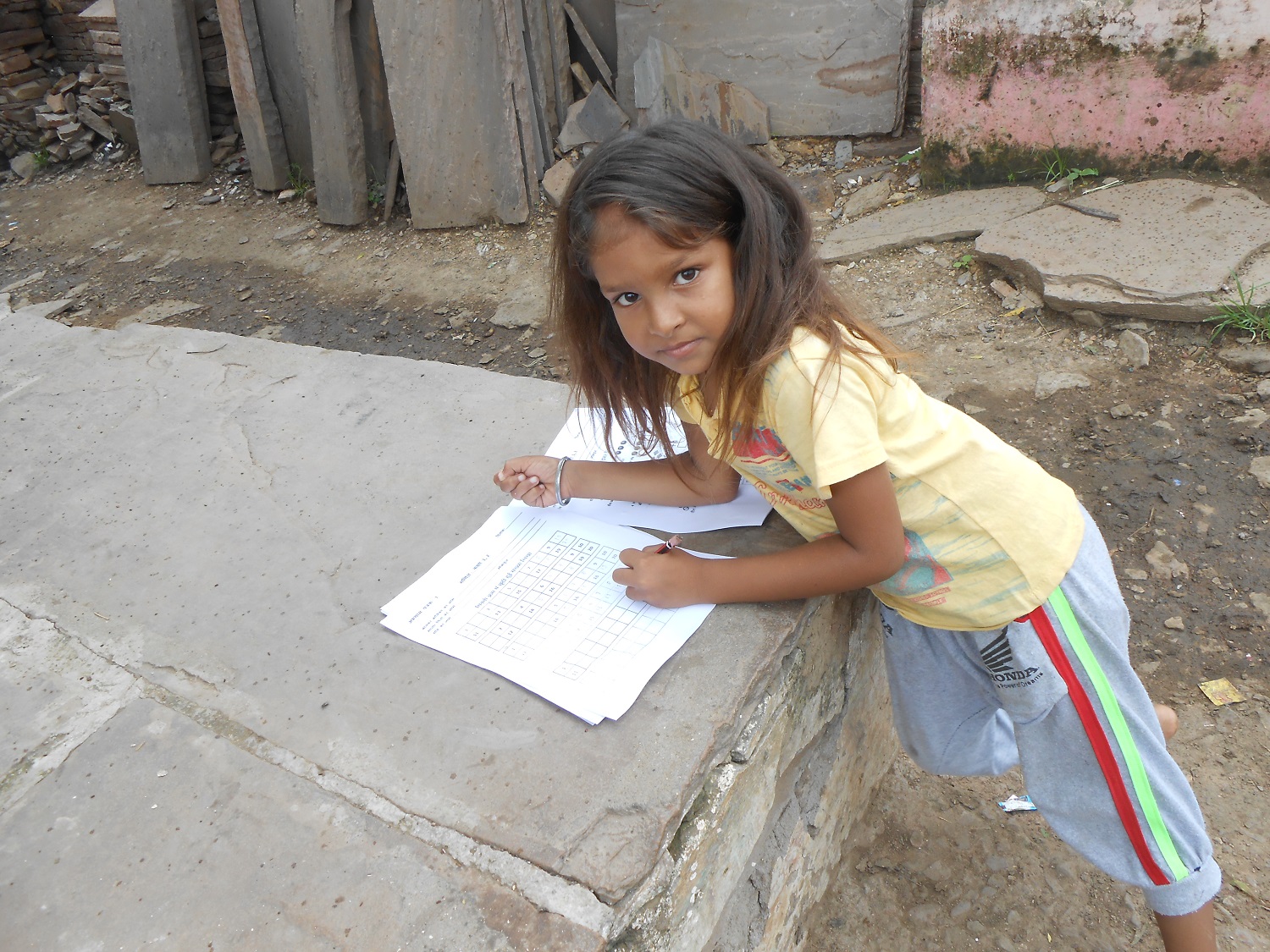Celebrating Budhpura! A joyous and momentous occasion to mark the village's progress in creating a Child Labour Free Zone.
On Sunday the 24th March, something joyous happened in the village of Budhpura, Rajasthan, India. To understand why 24th March was such a momentous day, though, we need to understand the history of this semi-rural village, tucked away in the backwaters of Rajasthan.
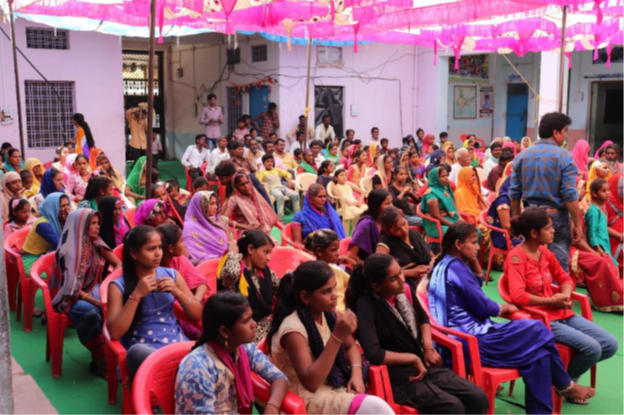
People of Budhpura gather to celebrate.
85% of the world's sandstone is quarried in Rajasthan, and the Bundi Highway cuts through this stone-quarrying region like a knife. There is a stretch of this highway where, for 20km, all you can see in every direction are quarries and mining activity!
Quarrying stone is intrusive, heavy, labour-intensive and dirty, generating incredible volumes of waste. Some of the waste is simply spoil, of no value; it must be removed to allow access to the valuable material that lies underneath. This spoil is dumped in vast piles that, from a distance, could easily be mistaken for beautiful mountain ranges...sadly they are not.
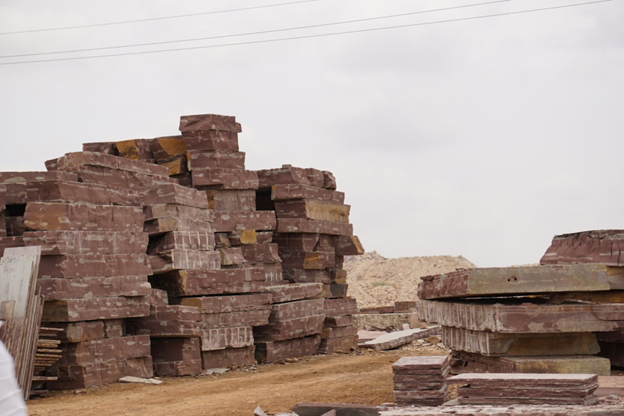
Towers of stone stacked in one of the many quarries.
Stone waste is different, though. It has a value! It can be broken up into smaller pieces to be used as road fill or sub-base material on construction projects. The larger pieces can be crafted into a product with an even greater value - a product that is used extensively in hard landscaping projects throughout Western Europe. Sandstone Setts, known locally as Sandstone cobbles, are where Budhpura’s story begins.
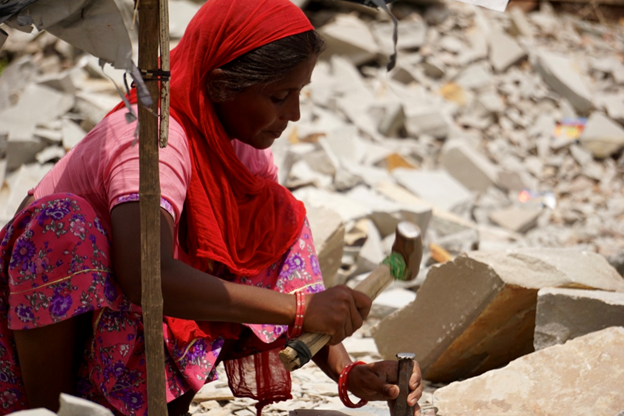
A woman making cobbles.
Budhpura sits in the middle of this vast quarrying region, just off the Bundi Highway. “Every man, woman and child you see can make cobbles.” That was the proud boast of an Indian Sandstone exporter as we drove through the village in December 2005. After deciding to become a stone importer, I was visiting the region on a scouting mission to meet suppliers. Child labour in the sandstone industry was quite a normal thing in 2005. The media spotlight from the UK and Europe was not yet shining on the industry, so it was business as usual in Budhpura.
In a community with no outlook, no prospects and no hope for the future, child labour was completely normal and had been going on for generations. There are many factors that contribute to why the children in Budhpura fall into work. A poor education system, weak social structures and endemic poverty are all key drivers, but the simplest explanation of all is that there isn’t an awful lot else to do. A community like this has become the home of sandstone cobble production in Rajasthan. Virtually everyone who lived here was involved in some capacity.
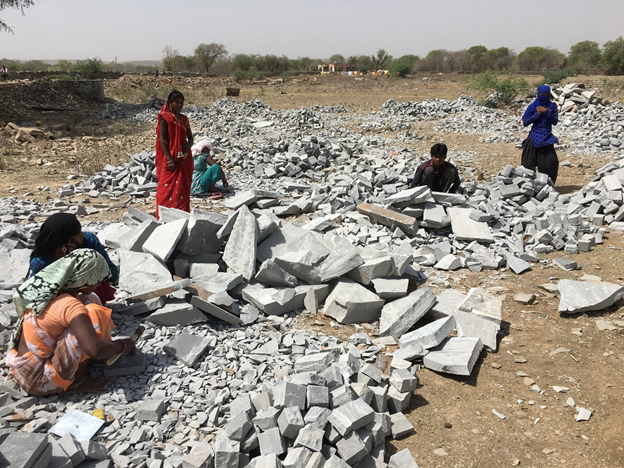
Cobble making takes place with the most limited resources.
With its population of children engaged in child labour, the future was bleak. The village was heading for destitution until something happened that would change the destiny of Budhpura forever. In 2013 an exciting project was launched in the villages and hamlets around Budhpura. The ambition of the project was to create small geographical areas where child labour was rejected by all stakeholders in the community, Child Labour Free Zones (CLFZ). The message was very clear and unambiguous, with no if’s, but’s or maybe’s; all children must attend school.
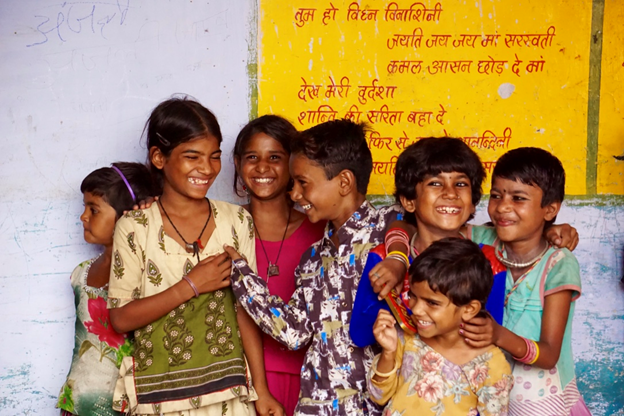
Children in Budhpura
In a village where child labour was the norm this was not an easy task and required lots of effort and a combination of different approaches.
The project drew together lots of different organizations, both locally and internationally. Arisa (formerly known as ICN), a Dutch NGO and a member of Stop Child Labour, who had already reported on child labour in the production of cobble stones in 2005, linked up with Manjari in 2013, a small NGO based in the heart of the Budhpura community.
Manjari were already deeply involved with the local community, more than anyone they were aware of the impact child labour was having in Budhpura. As part of the community, Manjari were perfectly placed to lead any community-based initiatives to tackle child labour.
Additional support was provided from the MV Foundation who provided Manjari with training and guidance. Support from the international business community came from Beltrami, Stoneasy and London Stone who all sourced products from this region.
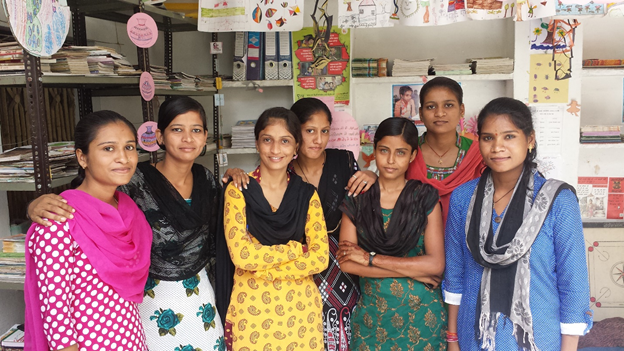
Part of the initiative is to help women find work outside the cobble yards.
Six years on and the project has had a huge impact. There is still so much work to do but Budhpura is transformed. Hundreds of children are now going to school regularly, women have been empowered and the community has been socially mobilized to play an active role in forming and rebuilding the social structures required to tackle the myriad of social problems that exist here.
On the 24th March 2019, 275 people, a mixture of locals, business owners and NGO members, came together to celebrate the success of the child labour free zone and to look forward to a brighter future.
Manjari opened the proceedings, welcoming the guests and sharing the projects successes. We then heard from Arisa, the Dutch organization addressing human-rights related businesses who – through the Dutch Ministry of Foreign Affairs - support this project. Arisa talked about how the success of the project would not have been possible without the support and co-operation of the local and international business community. We then started to hear from people on the ground about the difference that this project was making to the community.

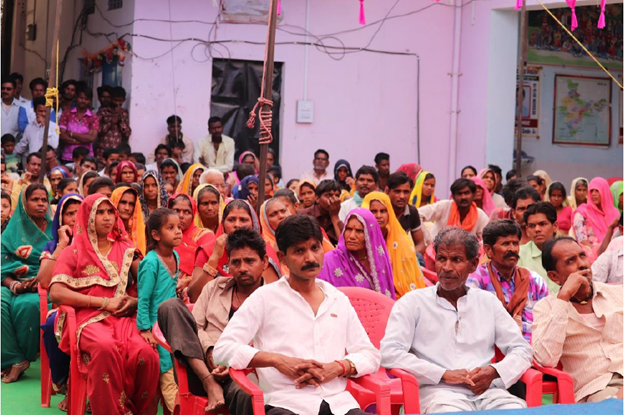
Listening to speakers at the celebrations in March.
A massive issue in Budhpura and the stone industry in general is silicosis. It’s a disease that has ravaged the local population and the lack of social structures in Budhpura meant that the people had no means to fight against the disease. Moreover, there was a lack of awareness about the risks of working with sandstone. Since the Child Labour Free Zone was established Manjari have worked tirelessly to inform people of the disease and to help people to access government scheme that compensates stone workers suffering from silicosis. Two members of local labour groups explained to the crowd that they were now much better informed about the health risks associated with Sandstone production, especially silicosis.
One of the most promising and unexpected windfalls from the CLFZ project has been the empowerment of women. The lives of women in Budhpura is a viscous cycle of child (and illegal) marriage, invariably followed by young motherhood, a path that promises only poor health and hugely limited future opportunities.
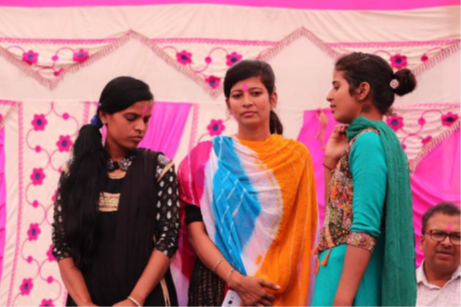
Members of women's self-help groups spoke at the celebrations.
It’s a vicious cycle that needs to be broken and Manjari have been at the forefront of a movement to bring about change. The CLFZ project has spawned the creation of women’s self-help groups and we are now seeing up to 30 separate groups, comprising of 15-30 girls from the age of 13-19, meeting monthly. The issues being discussed are solely for the women’s benefit: menstrual health, child marriage, career prospects. We heard from members of the women’s self-help groups and they talked about the skills training they had undergone to give them employment opportunities outside the stone industry. Furthermore, we heard from one of the members of the newly established labour groups that discusses occupational health and safety and a regular basis. The members (25 groups) have all received a first aid training.
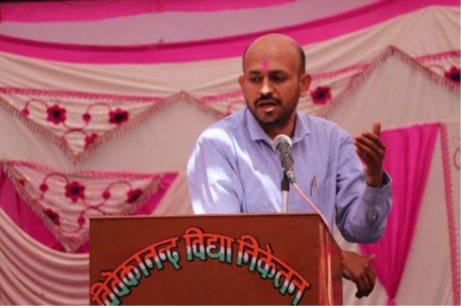
Varun Sharma of the NGO Aravali.
Next, we heard from members of the Cobble Traders Union who are an integral part of the community in Budhpura. The Cobble Traders Union have come together to reject child labour and without their support and engagement this project would have no chance of success. In 2017 the cobble trader’s union came out and declared their production yards as child labour free zones, a huge step in establishing Budhpura as a Child Labour Free Zone.
The sole purpose of this project has been to get local children out of child labour and into education. Poor facilities and a lack of local teachers have been a huge barrier in convincing parents that their children are better off in education. The project has been continually lobbying local government and in January 2019 we were delighted to announce that the numbers of teachers in Budhpura had doubled. Addressing the crowd, we heard from a local teacher explaining the importance that quality education would play in maintaining the Child Labour Free Zone.
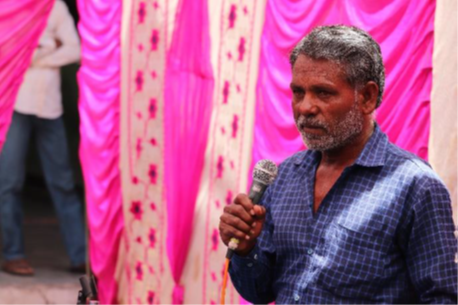

We also heard from outside representatives from the MICA sector and the inspiration and learning that they had gained from the Child Labour Free Zone project and would be taking back to their sector.
Many people have played a role in the success of this project but one of its most committed and passionate advocates has been Bram Callewier, general manager of Stoneasy, a Belgium importer of natural stone from India. Bram has been devoted to eradicating child labour in Budhpura and we heard Bram address the crowd to re-affirm his commitment to the project and to ask for the commitment of the whole community of Budhpura to continue the fight.
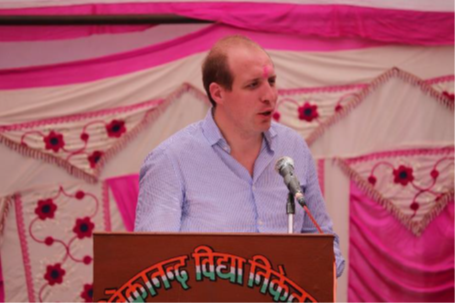
Bram Callewier, General Manager of Stoneasy.
All in all, the event was a happy, positive day, a celebration of the future of this village. The CLFZ project has had a such a positive impact on the community here, and there is now real momentum to build on the progress. We’ve just received the exciting news that the Dutch Government will be providing funding to enable this project to run for another 5 years. The project absolutely needs this because there is so much more work to do if we are to continue the progress made on improving education, addressing gender inequality and getting better conditions for the thousands of homeworkers who have yet to be touched by the CLFZ project.



